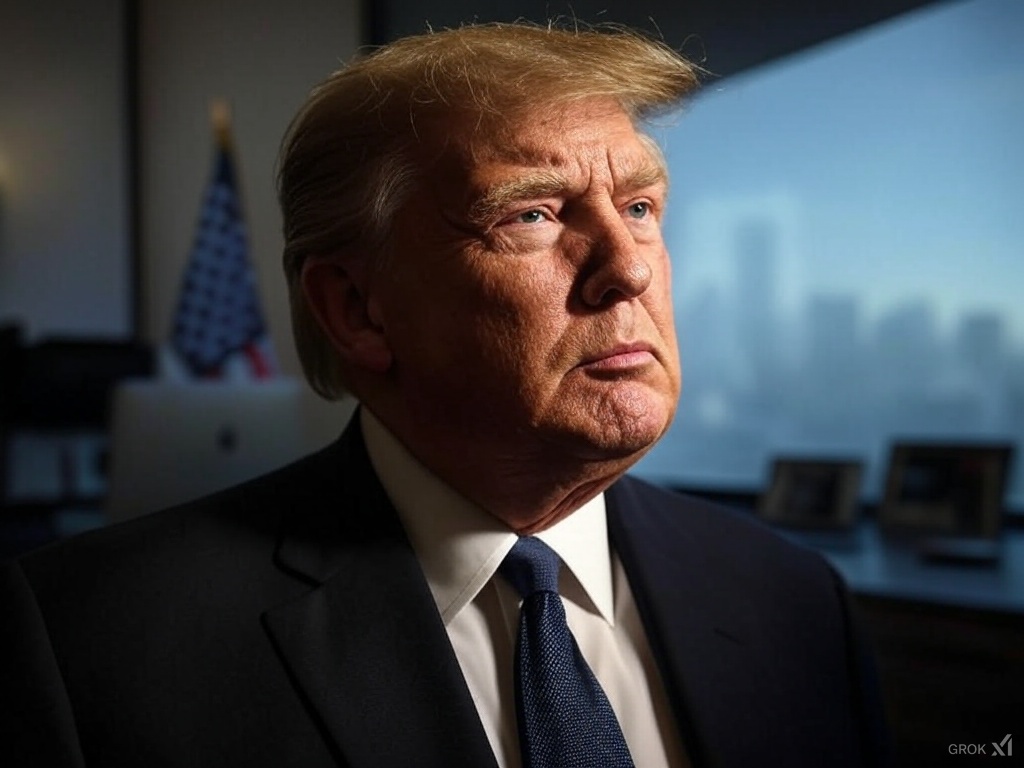
With a dynamic agenda at the helm, President Trump embarks on an ambitious pact designed to reshape economic ties and recalibrate global trade dynamics.
In February 2025, with Donald J. Trump now firmly in office, the United States is witnessing an unprecedented shift in its economic strategy—a strategy that harkens back to his earlier, high-profile negotiations while boldly charting a new course for U.S.-China relations. This new trade initiative is far more than a mere renegotiation of past deals; it is an expansive, multi-pronged approach that seeks to integrate traditional trade remedies with strategic investments, technological cooperation, and even elements of national security. The pressing question remains: Can this transformative pact, engineered in the context of the emerging BRICS framework, rebalance trade disparities while fostering sustainable economic growth?
An Ambitious Agenda for a New Era
Drawing from both the nostalgic recollections of golden-salon negotiations at Mar-a-Lago and the hard lessons of the 2020 deal that fell short on its lofty promises, the current administration is leveraging an assertive playbook. President Trump’s renewed approach is characterized by an aggressive use of tariffs—most notably the recent 10 percent levy on Chinese imports—as a strategic lever to compel Beijing into delivering on overdue commitments. Unlike earlier iterations, this plan envisions a comprehensive agreement that spans far beyond mere market access, proposing instead a wide-ranging framework that touches on issues such as nuclear security and advanced technology exchanges. This holistic vision is intended not only to correct historical imbalances but also to set the stage for a new era of U.S.-China cooperation under the broader umbrella of BRICS influence.
Political Currents in a High-Stakes Environment
The political landscape in Washington is charged with anticipation and internal debate. On one side, Trump’s rhetoric—marked by his characteristic candor and combative style—has reenergized his base and reaffirmed his reputation as a relentless dealmaker. His bold pronouncements and willingness to defy traditional diplomatic norms signal an administration determined to rewrite the rules of engagement with Beijing. Yet, within the corridors of power, advisors remain divided. Some caution that an overly confrontational stance might trigger further escalation in a relationship already marred by mistrust and geopolitical rivalry. Others argue that a resolute posture is precisely what is needed to force China’s hand, urging that any concessions must be backed by tangible economic benefits. Against this backdrop, the debate is not merely about numbers and tariffs but also about the symbolic assertion of American economic sovereignty in a multipolar world.
Economic Ripples: Winners, Losers, and the Shifting Market Landscape
Economically, the envisioned trade pact carries far-reaching implications, with certain sectors poised to reap significant benefits while others brace for potential setbacks. On the beneficiary side, traditional heavyweights like U.S. Steel stand to gain from planned modernization initiatives that aim to revitalize domestic manufacturing capabilities. In the renewable energy sphere, companies such as Tesla and First Solar could see a surge in growth driven by joint ventures and technology-sharing agreements, bolstered by Chinese commitments to invest in next-generation green technologies. The agricultural sector, too, is expected to experience a renaissance; major players like Archer Daniels Midland and Cargill could secure lucrative long-term contracts if Beijing increases its purchase of U.S. crops, thereby revitalizing rural economies and stabilizing commodity markets.
Conversely, the new trade architecture may pose challenges for sectors heavily reliant on established supply chains and technology transfers. Leading consumer electronics firms like Apple could find themselves caught in a recalibrated regulatory landscape where stricter export controls and shifting market dynamics disrupt their global operations. Semiconductor manufacturers and software companies may also encounter headwinds as the deal’s stipulations force a rethinking of supply chain logistics and technology development strategies. These industries, long accustomed to predictable Sino-American interactions, now face an environment where geopolitical tensions and rapid policy shifts introduce layers of uncertainty and potential risk.
In-Depth Analysis: Navigating Opportunities and Obstacles
What sets this trade initiative apart is its dual focus on immediate economic gains and long-term strategic positioning. By intertwining tariff policies with incentives for Chinese investments in critical U.S. sectors, the deal seeks to create a feedback loop that boosts domestic job creation while simultaneously pressuring Beijing to adhere to higher standards of market fairness. Yet, this ambitious plan is not without its perils. Critics point to the possibility of retaliatory measures from China—ranging from new tariffs on American exports to potential restrictions on technology transfer—that could undermine the intended benefits. Moreover, as both nations navigate the treacherous waters of modern trade diplomacy, internal divisions within the Trump administration itself could lead to inconsistent policy implementation, further complicating the delicate balancing act between confrontation and cooperation.
Quick Insights
- President Trump’s 2025 trade initiative is a comprehensive, multi-dimensional effort to redefine U.S.-China relations amid the evolving BRICS context.
- The strategy leverages aggressive tariff measures alongside proposals for enhanced Chinese investments in pivotal U.S. sectors, including manufacturing, renewable energy, and agriculture.
- Key economic winners are likely to include U.S. Steel, Tesla, First Solar, Archer Daniels Midland, and Cargill, while technology giants such as Apple and semiconductor firms may face significant challenges.
- Political debates and internal policy divisions underscore the complexities of achieving a balanced, long-term trade pact in an era of heightened global competition.
What’s Next?
As the Trump administration pushes forward with its high-stakes negotiations, global markets, industry leaders, and policymakers are closely monitoring every development. The coming months will be critical in determining whether this expansive trade pact can deliver on its promise to rebalance the economic relationship with China while driving domestic growth. With back-channel communications and high-level strategic dialogues already underway, the world watches to see if this bold initiative will herald a new chapter in international trade—a chapter defined by dynamic cooperation within the BRICS framework or, alternatively, by prolonged economic turbulence.



